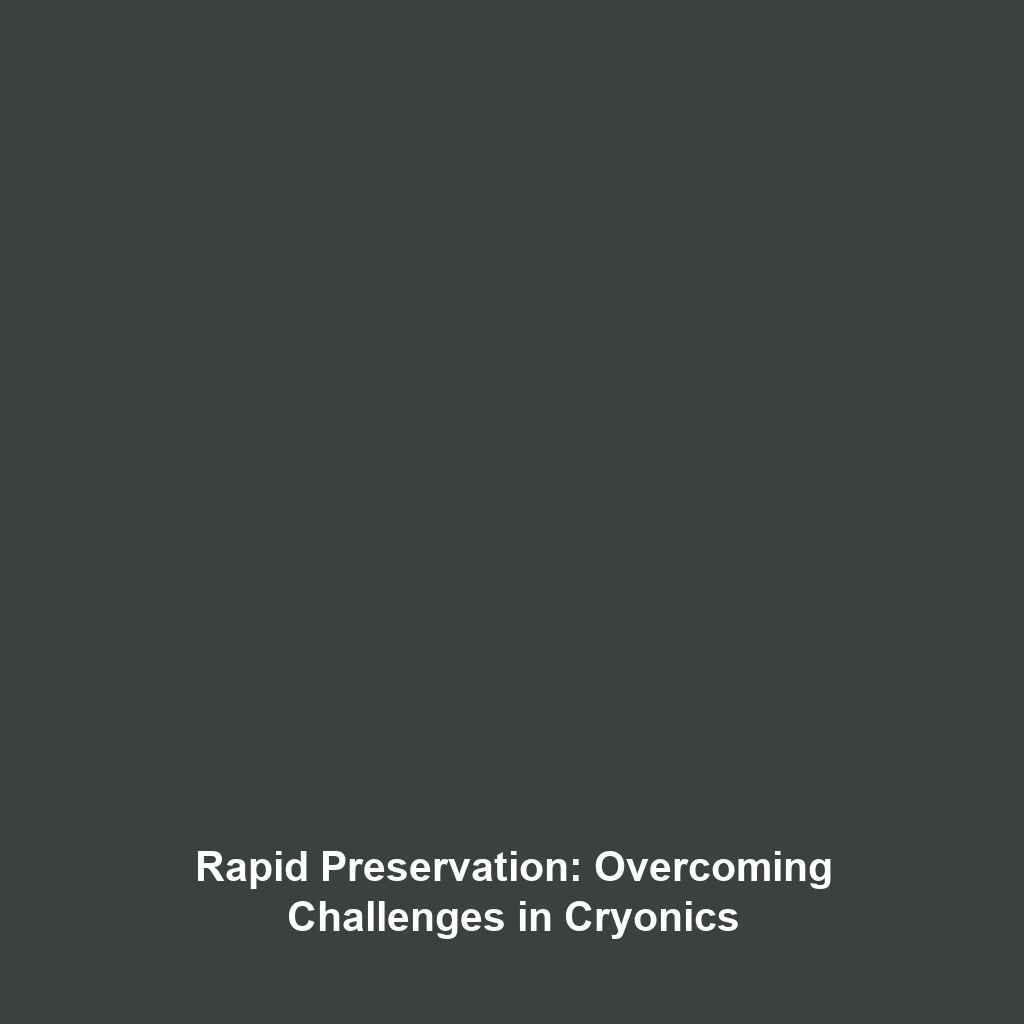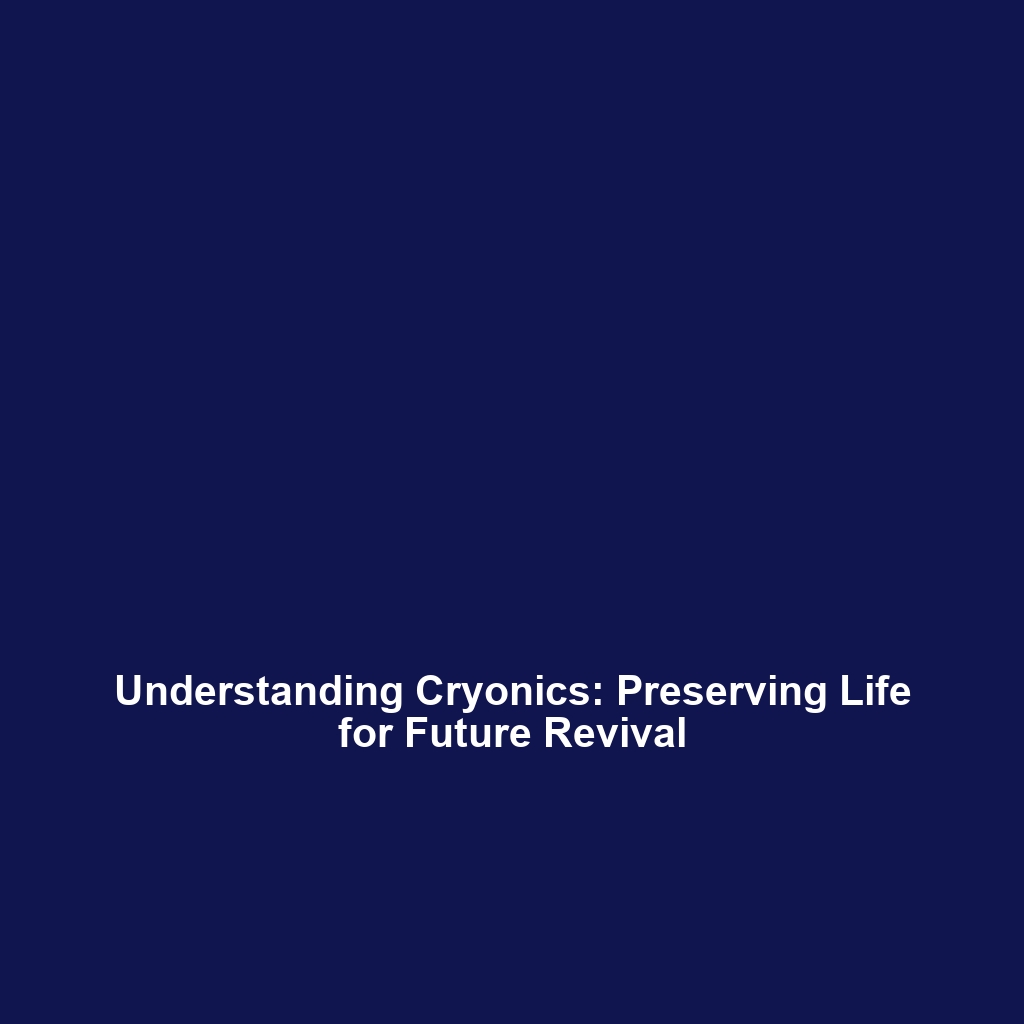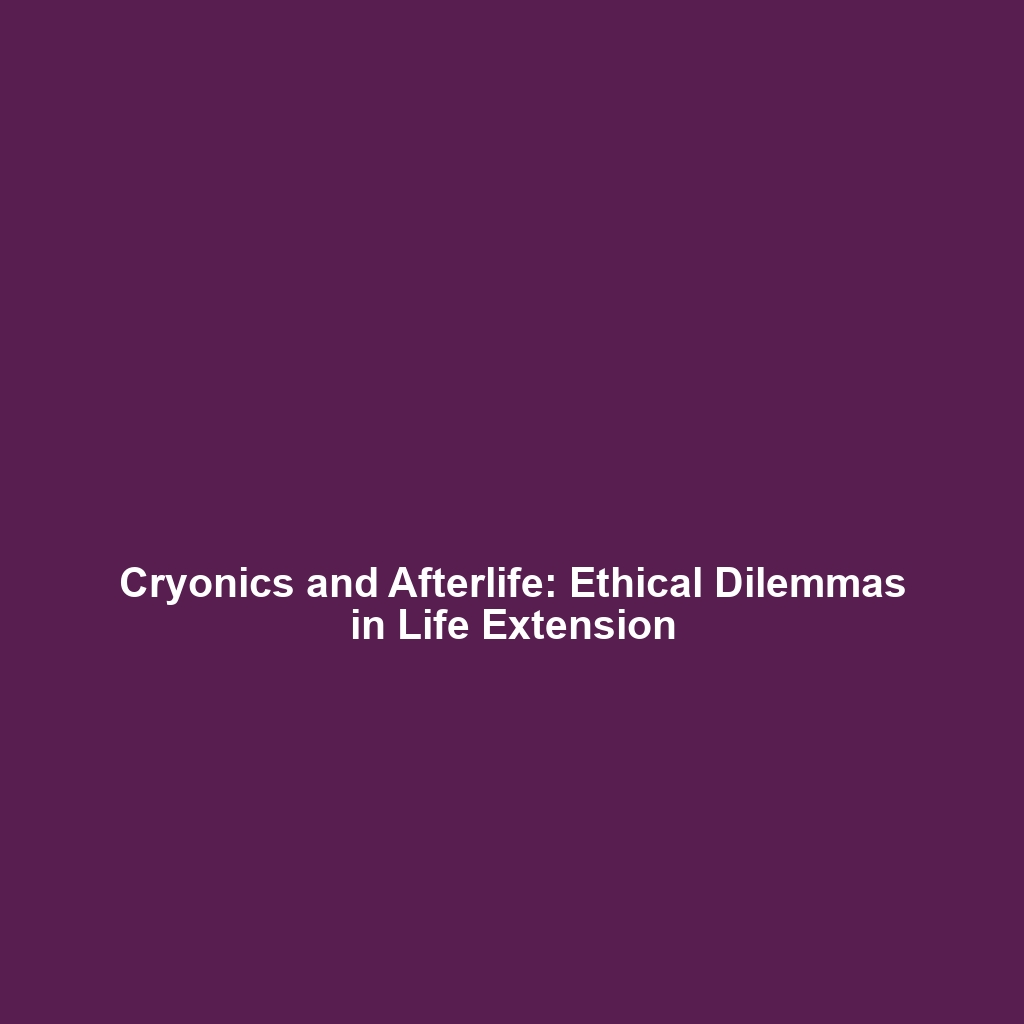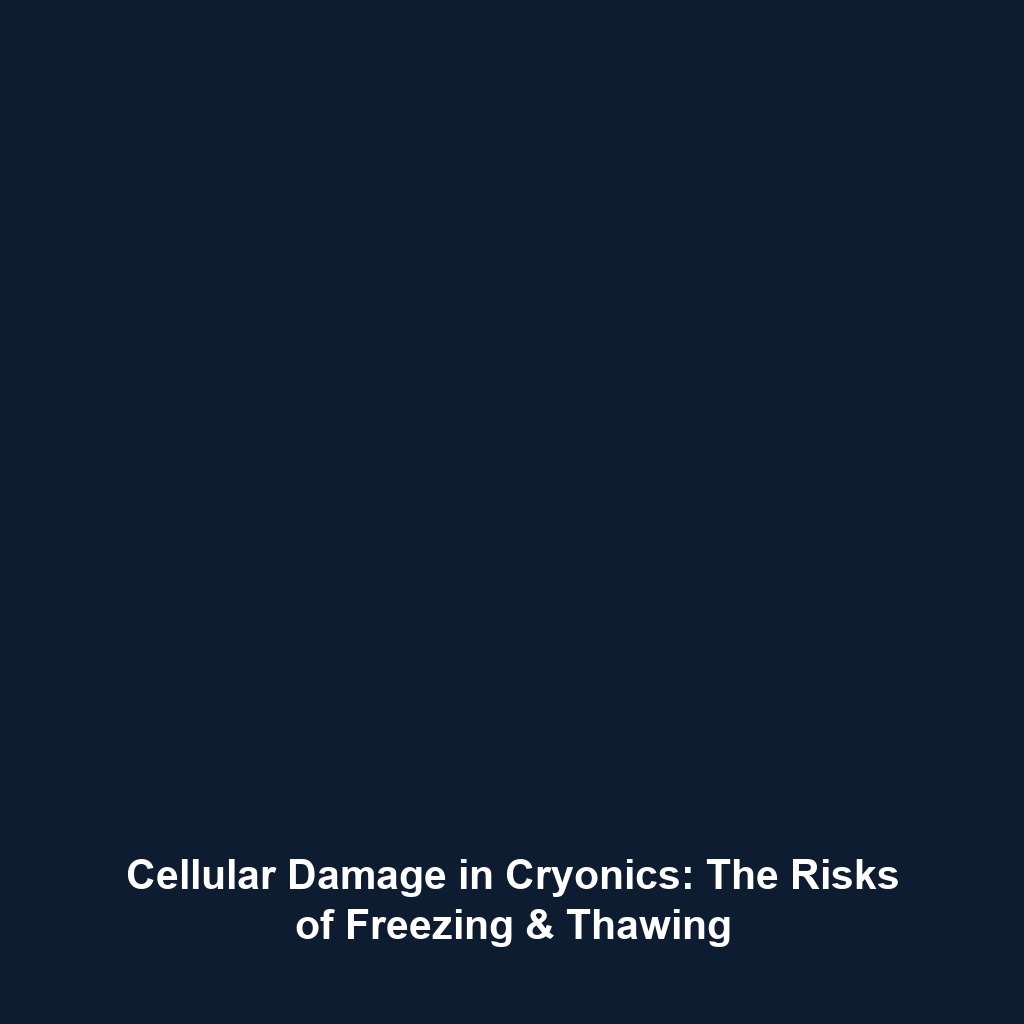Timeline for Revival in Cryonics & Life Extension
Introduction
Understanding the timeline for revival in the field of cryonics is paramount as it delves into the potential revival of individuals who have undergone cryopreservation. Estimates suggest that this revival could take place over a period ranging from a few decades to potentially centuries. This variance largely hinges on advancements in cryobiology, medical science, and computing technology. As these fields evolve, so too does the feasibility of life extension through cryonics, raising significant ethical and practical considerations that resonate across scientific communities.
Key Concepts
What is Cryonics?
Cryonics is a practice that involves the preservation of individuals at extremely low temperatures after clinical death, with the hope that future advancements in technology may allow them to be revived. The timeline for revival is a critical component of this field, marked by several key principles:
- Cryobiology: The study of the effects of low temperatures on living organisms, essential for developing effective preservation methods.
- Medications for Preservation: Future medical advancements may create better cryoprotectants that could minimize cellular damage during preservation.
- Computational Advances: Enhanced computing capabilities may aid in the intricate processes of reviving preserved individuals and managing complex biological data.
Applications and Real-World Uses
The timeline for revival has tangible applications within cryonics and life extension. Understanding how these concepts are applied reveals potential benefits:
- Medical research utilizing cryopreserved cells for studying diseases.
- Improvement of cryopreservation techniques through animal studies aimed at enhancing human applications.
- Development of technologies that improve data management and analytics in biological research.
Current Challenges
Despite the promising outlook of the timeline for revival, several challenges and limitations persist:
- Scientific Roadblocks: Current methods may not effectively prevent ice crystal formation, which can damage cells.
- Legal and Ethical Issues: The definition of death and consent for cryopreservation remains a contentious topic.
- Public Perception: Misunderstanding and skepticism about the feasibility of cryonics can hinder funding and research efforts.
Future Research and Innovations
Looking ahead, ongoing research is poised to transform the timeline for revival significantly. Some anticipated innovations include:
- Improved Cryoprotective Agents: New compounds that reduce toxicity during freezing could enhance viability upon revival.
- Advanced Storage Technologies: Development of better storage solutions that maintain biological specimens at ideal conditions.
- Integrative AI: Incorporation of artificial intelligence in predicting revival outcomes based on complex biological frameworks.
Conclusion
The timeline for revival sits at the intersection of cryonics, medicine, and life extension, with estimates varying greatly based on technological advancements. While significant challenges remain, the potential for transformation in our understanding of life and death continues to inspire research and innovation. As we look towards the future, it is essential to foster discussions and support advancements in this field.
For further exploration on related topics, consider reading about the ethical implications of cryonics or recent advancements in cryobiology.






